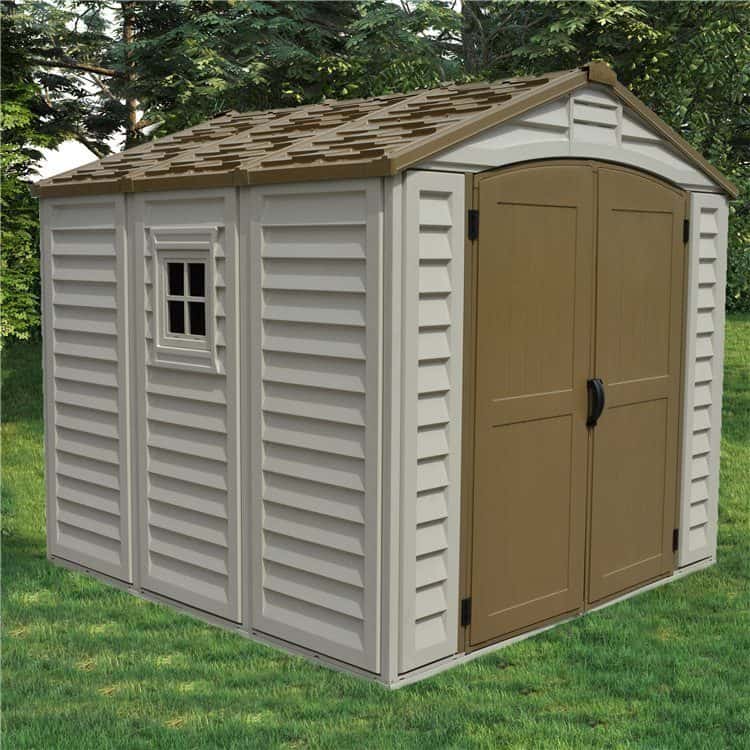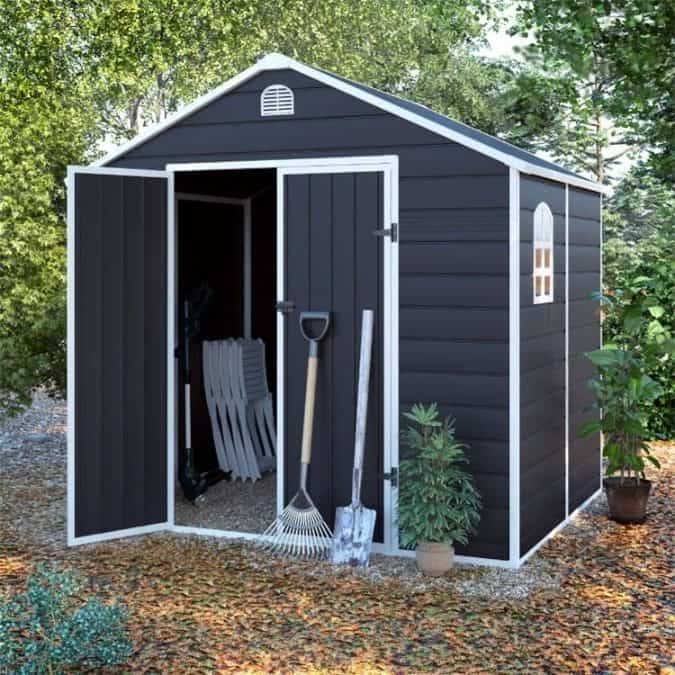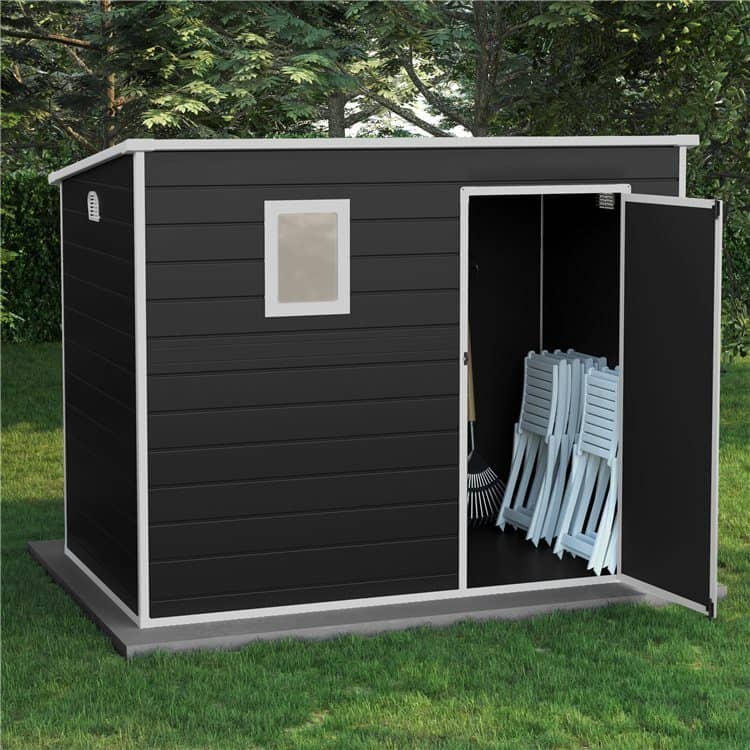Jump to:
Plastic sheds are well-favoured for their durability and low maintenance requirements. However, these structures need care and extra protection, like weatherproofing, for longevity. If you’re up for the task, follow these three steps and considerations to get started.
Step 1: Assess Your Garden Shed’s Condition

Examine your shed for signs of issues, such as cracks or holes. These may seem small at first, but they can allow water and other elements to penetrate inside. They could also grow larger, causing significant damage and possibly costing you more.
Look for fading or discolouration. Overexposure to sunlight can cause these concerns. If overlooked, they can make the shed more susceptible to other types of impairments, e.g., warping.
Inspect the roof, as it can be particularly vulnerable to weather damage. Check for worn mineral felt or missing tiles and address them right away. Take this time to examine your plastic shed foundation and ensure it’s still levelled and secure. Otherwise, the structure can shift and wouldn’t be stable in the long run.
How’s your shed’s ventilation? Have you checked if there’s proper air circulation inside? Look for signs of mould growth and follow our guide on how to damp proof a shed to tackle the issue.
Step 2: Find the Right Weatherproofing Option

There are specific weatherproofing options designed specifically for plastic sheds. Keep in mind that some weatherproofing materials may not adhere well. This could lead to ineffective protection against weather damage. These options are better suited to safeguard your shed against the elements:
Sealant
A sealant is applied to the surface of the shed to create a protective barrier against moisture. It’s easy to apply and affordable, making it a popular choice for DIYers.
By forming a waterproof barrier, sealants keep rain and snow at bay, reducing the risk of warping or mould. This simple solution extends the shed’s lifespan, ensuring it stays sturdy and intact.
Paint
Painting a plastic shed can provide added protection and enhance its appearance. But, it’s important to use the right type of paint and techniques to ensure the paint adheres properly.
Use a paint that is designed for plastic surfaces, such as acrylic or latex-based paint. These paints adhere well to plastic and provide excellent protection against the elements. Before painting, ensure that the garden building is clean and dry.
Spray-on coatings
Sure, painting your heavy-duty plastic shed is possible. However, it may not be necessary if your primary goal is weatherproofing. This is where spray-on coatings come into play.
Spray-on coatings provide a long-lasting protective layer against water and UV rays. Although more costly than other materials, they offer excellent protection and durability.
Tarpaulin
Tarpaulins are heavy-duty sheets that can be used to cover sheds. They are a cost-effective way of providing temporary protection, particularly during winter.
To use, measure the dimensions of your shed and get one that’s slightly larger than the unit itself. This will allow you to cover the entire structure and ensure it’s protected from the elements. Drape it over the roof and sides, making sure it’s taut and secure.
Step 3: Apply Weatherproofing

- Begin by thoroughly cleaning the surface of your plastic shed and ensuring it’s dry. Remove any dirt or grime using soap and water, then let it air dry completely.
- Choose the appropriate weatherproofing material based on your local weather conditions. Options include sealants, spray-on coatings, or paint.
- Apply the chosen material evenly using a brush or roller, covering all corners and edges. Let it dry fully before considering a second coat.
- Take safety precautions by wearing gloves and safety goggles. Work in a well-ventilated area to minimise exposure to fumes.
- Allow the material to dry completely according to the manufacturer’s instructions. This may take several hours or even days, depending on the product and weather conditions.
- Repeat the process as necessary, typically every few years, to maintain effective protection.
Note: Always read and adhere to the application instructions on the product label. Some materials may pose flammability or fume risks. Always ensure proper ventilation and safety precautions are taken during application.
With a little effort and investment, you can keep your plastic shed safe from the weather for years. So don’t wait; take action now and weatherproof yours!
If you have any further questions, contact us and don’t hesitate to give us a call at 01909 768840. Now, let’s dive into the next topic: Do Plastic Sheds Need a Base?





